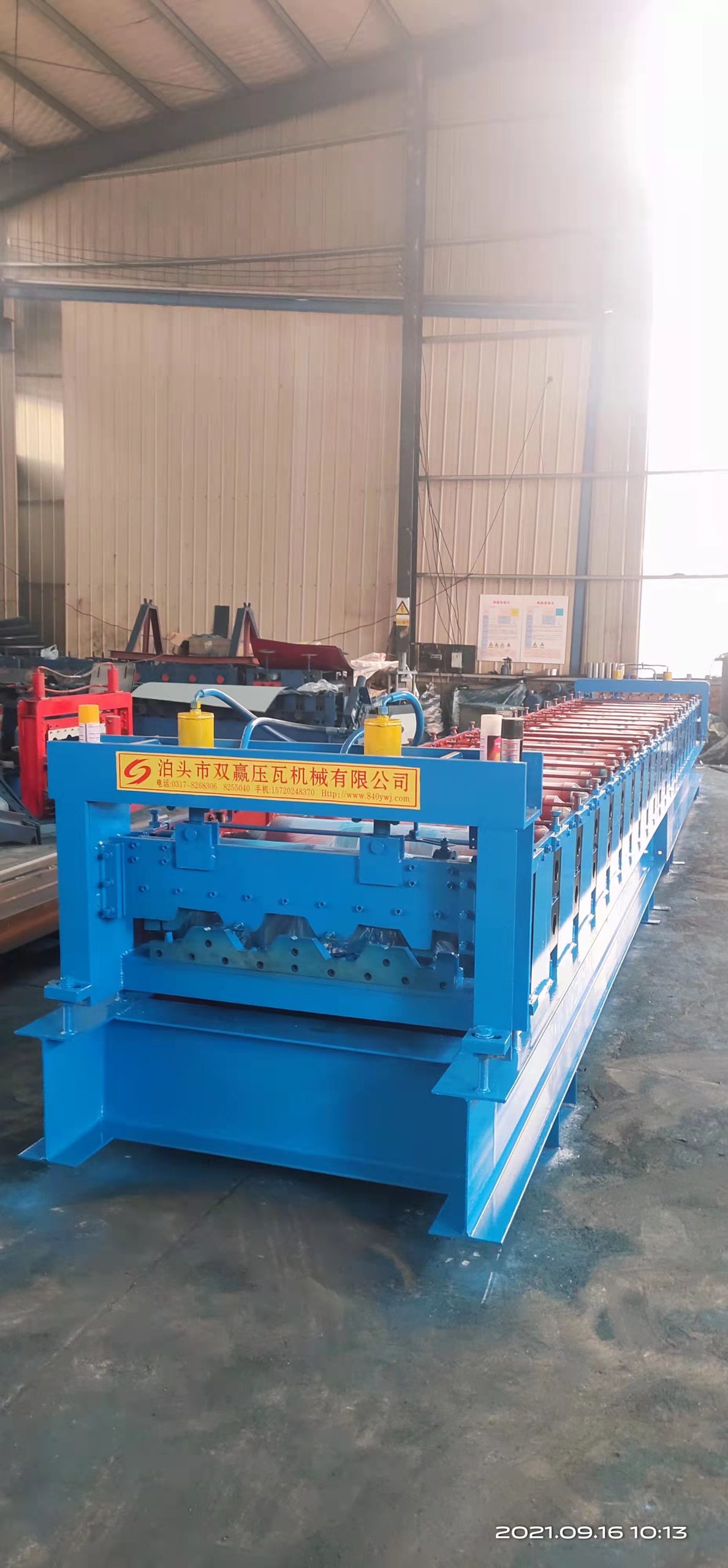688-type floor decking machine
The 688-type floor decking machine is a device used for producing floor decking sheets.
I. Working Principle
This machine uses a series of rollers to roll and form metal plates (usually steel plates) into the specific shape of 688-type floor decking sheets.
This machine uses a series of rollers to roll and form metal plates (usually steel plates) into the specific shape of 688-type floor decking sheets.
II. Main Features
- High efficiency: It can produce a large number of floor decking sheets in a relatively short time, improving production efficiency.
- Precise forming: Ensuring high dimensional accuracy of the produced floor decking sheets, with consistent wave crest heights and tight laps, guaranteeing the quality of floor decking.
- Stable performance: Stable operation with a low failure rate and capable of continuous work for a long time.
III. Technical Parameters
- Forming speed: Generally around 8 – 15 meters per minute. The relatively fast speed can meet the needs of large-scale production.
- Roller material: Mostly high-quality alloy steel. After special treatment, it has high hardness and wear resistance, ensuring the service life of the rollers.
- Motor power: The motor power of the forming machine is usually 5.5 – 7.5 kilowatts, providing sufficient power for the operation of the equipment.
- Applicable plate thickness: Can be applied to steel plates with a thickness of 0.8 – 1.5 millimeters, meeting the needs of different projects.
- Equipment size: Generally, the length is 8 – 10 meters, the width is 1.5 – 2 meters, and the height is 1.5 – 2 meters. The specific size may vary depending on the manufacturer and model.
IV. Application Fields
Widely used in building structures such as high-rise buildings, industrial plants, and large shopping malls. As a permanent formwork for floor slabs, it bears the weight of concrete and construction loads, and at the same time plays a role in enhancing the stiffness and seismic performance of floor slabs.
Widely used in building structures such as high-rise buildings, industrial plants, and large shopping malls. As a permanent formwork for floor slabs, it bears the weight of concrete and construction loads, and at the same time plays a role in enhancing the stiffness and seismic performance of floor slabs.


